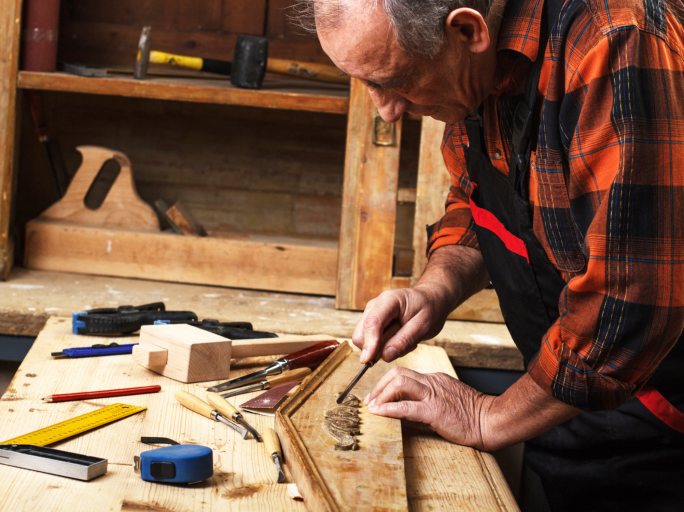Carpentry is among the oldest methods of construction across all societies It has also evolved to include new techniques, materials, and tools.
A term used to describe various methods and techniques Carpentry is a modern term that covers various construction materials, not simply wood. It doesn’t matter if you’re contemplating taking our CPC30220 Certificate III in Carpentry or are considering the career of a woodworker or looking to improve your skills It’s worth a look at what a trade can do for you.
Joinery, woodworking and carpentry are highly specialized craft, and their wood products are sought-after for high-end and trendy homes. While the basic principles of several kinds of carpentry can be learned by the form of a certificate III of Carpentry but they can take time to perfect which is why this area has become an obsession for many crafters. Let’s have a look at some traditional techniques for woodworking and carpentry techniques from around the globe and see how they’ve been incorporated into contemporary homes.
French Parquetry
This sophisticated technique is mostly utilized in flooring, however it can also be utilized in ceilings as well as a variety of furniture pieces made of wood. Made up of small pieces of wood that are laid out precisely in a pattern or mosaic to create an amazing effect. The patterns themselves are different from one design to another, however the most popular parquetry patterns are the angular patterns of chevron and herringbone.
Parquetry is a test of accuracy. Accurate joints and precise margins are crucial to get the perfect geometric lines that are evident in the final result. Nowadays, this method is executed by specially trained joiners. The word comes of it being the Old French ‘parchet’, meaning a small, enclosed space. This technique is evident in many of the most well-known models of French architecture throughout time such as Louis the XIV’s Palace of Versailles.
The Certificate III in Carpentry within Westchester is generally designed to be used for construction and building but it also provides an excellent opportunity to develop practical skills in the role of an apprentice. Once you’ve learned the skills, you can make use of these qualifications to specialize in other areas at some point in the near future.
Sampo-Zashi Joinery
The Japanese joinery technique connects four pieces of lumber in a stylish design that is nail-free and is usually reserved for the best carpenters and joiners. It is a combination of the strength and durability of the interlocking dovetail joint with the precision and complexity that comes from the puzzle like mortise as well as the tenon joint.
It is believed that the popularity of timber-only construction in Japan could be due to the wood’s natural capacity to take on shock. It means that structures are able to withstand earthquakes and strong winds more easily than different materials. If you take with your Certificate III in Carpentry online You’ll not only gain experience in construction and building in the field, but also have the opportunity to apply these techniques often at home.
Dongyang Wood Carving
In the Ming and Qing dynasties ornate wooden carvings in China was at its highest, and it is evident the immense impact this craft had on. There are three woodcarving major cities in China one of them can be found in Dongyang, Zhejiang Province. The woodcarvings in this city are famous for their distinctive style, with deep dimensions, intricate designs, and representations of lotus flowers, horses and even people.
If this kind of woodcarving appeals to you, why not incorporate it with the techniques learned through a Certificate III in Carpentry online course to make cabinets that are inspired by Chinese or feature furniture pieces?
Danish Furniture Design
Though it’s a bit more distant from the construction and building industry, carpentry skills transferable to other industries can help you get into furniture design. In this case, getting your Certificate III degree in Carpentry regardless of where you are in Australia is an excellent starting point.
Danish furniture flourished during the mid-century of the 20th century, beginning in the 1940s until the 1960s. It was revolutionized by the designer Kaare Klint’s early vision of modern, clean lines The Bauhaus movement that he embodied is alive to this day. It was marked by a love of design and function which was a stark contrast with conventional design, which mostly ignored the aesthetic aspect.
The majority of the time, Danish modern furniture uses luxurious materials, such as natural teak wood and creamy leathers. This ensures the highest quality and long-lasting furniture pieces. Today, furniture is Denmark’s 5th most important export and demonstrates how much impact that well-trained joiners and carpenters can make in the world.
In an industry that is focused on staying ahead of new technology and improving efficiency it is difficult to forget the pleasure and value of handmade pieces. Although robotics, prefabrication and automation all have their place in the workplace, hand-crafted wood furniture requires premium prices and a level of attention to detail that is unparalleled.
A career in construction and building and the education that begins with the Cert III degree in Carpentry can open the way to any number of professions that emphasize the art of woodworking joinery, and Carpentry in Westchester.
